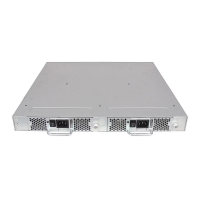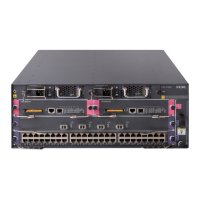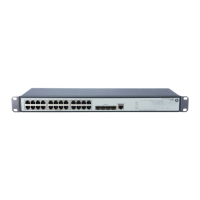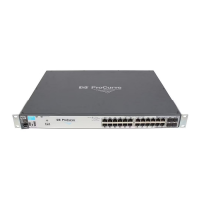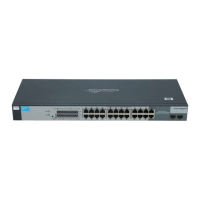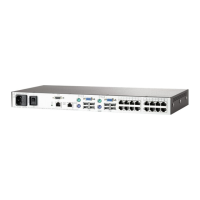24 Fabric OS Administrator’s Guide
53-1002446-01
The Ethernet interface on your switch
2
4. Enable DHCP by entering on.
switch:admin> ipaddrset
Ethernet IP Address [10.1.2.3]:
Ethernet Subnetmask [255.255.255.0]:
Fibre Channel IP Address [220.220.220.2]:
Fibre Channel Subnetmask [255.255.0.0]:
Gateway IP Address [10.1.2.1]:
DHCP [Off]:on
Disabling DHCP
When you disable DHCP, enter the static Ethernet IP address and subnet mask of the switch and
default gateway address. Otherwise, the Ethernet settings may conflict with other addresses
assigned by the DHCP server on the network.
1. Connect to the switch and log in using an account assigned to the admin role.
2. Enter the ipAddrSet command.
3. Enter the network information in dotted-decimal notation for the Ethernet IPv4 address or in
semicolon-separated notation for IPv6.
If a static Ethernet address is not available when you disable DHCP, enter 0.0.0.0 at the
Ethernet IP address prompt.
4. Skip the Fibre Channel prompts by pressing Enter.
5. When you are prompted for DHCP[On], disable it by entering off.
switch:admin> ipaddrset
Ethernet IP Address [10.1.2.3]:
Ethernet Subnetmask [255.255.255.0]:
Fibre Channel IP Address [220.220.220.2]:
Fibre Channel Subnetmask [255.255.0.0]:
Gateway IP Address [10.1.2.1]:
DHCP [On]:off
IPv6 autoconfiguration
IPv6 can assign multiple IP addresses to each network interface. Each interface is configured with
a link local address in almost all cases, but this address is only accessible from other hosts on the
same network. To provide for wider accessibility, interfaces are typically configured with at least
one additional global scope IPv6 address. IPv6 autoconfiguration allows more IPv6 addresses, the
number of which is dependent on the number of routers serving the local network and the number
of prefixes they advertise.
There are two methods of autoconfiguration for IPv6 addresses: stateless autoconfiguration and
stateful autoconfiguration. Stateless allows an IPv6 host to obtain a unique address using the IEEE
802 MAC address; stateful uses a DHCPv6 server, which keeps a record of the IP address and
other configuration information for the host. Whether a host engages in autoconfiguration and
which method it uses is dictated by the routers serving the local network, not by a configuration of
the host. There can be multiple routers serving the network, each potentially advertising multiple
network prefixes. Thus, the host is not in full control of the number of IPv6 addresses that it
configures, much less the values of those addresses, and the number and values of addresses can
change as routers are added to or removed from the network.

